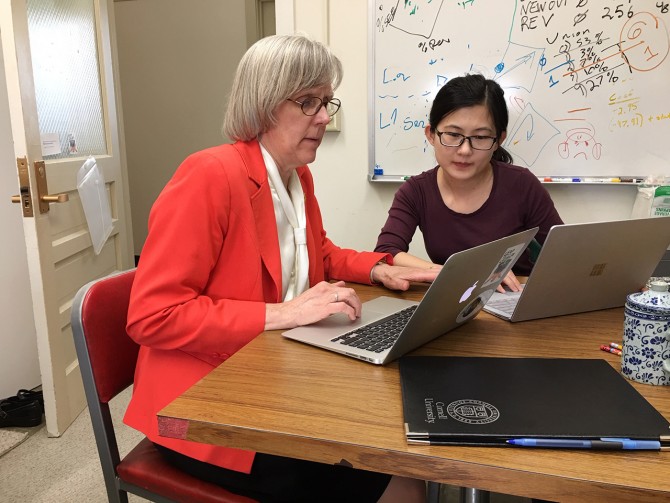Grant to help Warner study public health in rural planning
By Edith Fikes
Mildred Warner, M.S. ’85, Ph.D. ’97, professor of city and regional planning in the College of Architecture, Art and Planning, has secured a $500,000 grant from the U.S. Department of Agriculture (USDA) to extend her work on multigenerational planning in rural areas.
Her project, “Age-friendly Rural Communities – Linking Economy, Planning, Services and Health,” extends a related 2013 survey that was the first of its kind to gather comprehensive data on livability from communities across the U.S. The funding will help Warner expand her research, which now adds public health to topics of concern for planners and regional scientists.
Warner, who is also a member of the field of development sociology at Cornell, is working with postdoctoral fellow Xue Zhang, Ph.D. ’19, and co-investigator Elaine Wethington, professor emerita of human development and sociology in the College of Human Ecology. Wethington also is co-director of the Edward R. Roybal Center and professor of gerontology at Weill Cornell Medicine.
Wethington’s and Warner’s interdisciplinary breadth and expertise, combined with Zhang’s expertise in complex regional science modeling, are assets to the project as they seek new ways of assessing and addressing livability in rural areas – particularly in matters of public health concerning people of all backgrounds and ages.
Using their 2013 survey as well as the AARP 2014 Livability Index, the group has formulated an inclusive method for comprehensive data collection. That data will be used to create a sophisticated econometric model for livability, promoting economic development and public health across rural and urban communities.
“Often, our work on livable communities for all ages centers on senior citizens in cities, but this project adds rural families including young people and underrepresented ethnic groups to the equation,” Warner said.
Earlier this year, Warner gave a presentation at the annual American Planners Association conference, in which she identified overlaps between child- and age-friendly city criteria developed by UNICEF and the World Health Organization. These criteria inform the indicators Warner helped the AARP develop for its livable communities initiative in the U.S.
Warner’s current team of researchers is the first to link these AARP livability indicators to public health outcomes for a representative sample of communities across the country. Warner, Zhang and Wethington will study links between the indicators and the data they are collecting on planning, economic development, physical design, service delivery and public health.
Over the next two years, the USDA grant will support Warner and Zhang’s work on the expanded survey as well as the work of two partners: the International City/County Management Association, which is assisting in the 2019 survey; and Dreamal Worthen and Gail Randolph, professors at Florida A&M University, who will conduct case studies on minority rural communities in Florida.
“The recognition that there are several barriers to public health for people who live in rural areas is essential to this work,” Warner said. “But identifying the problem is only half the battle. We must also point to links between planning and public health that shift the planning paradigm.”
Edith Fikes is a design and communications assistant at the College of Architecture, Art and Planning.
Media Contact
Get Cornell news delivered right to your inbox.
Subscribe

